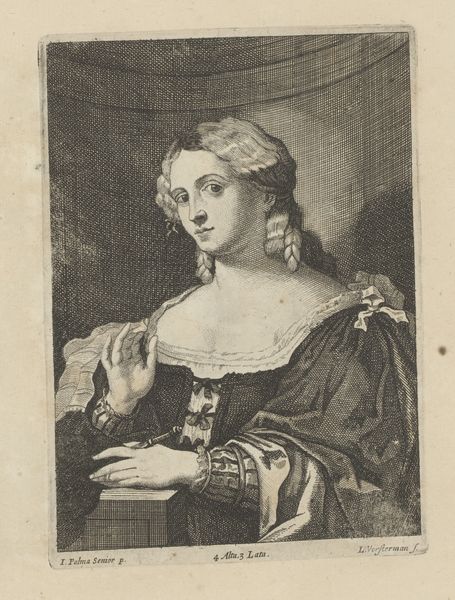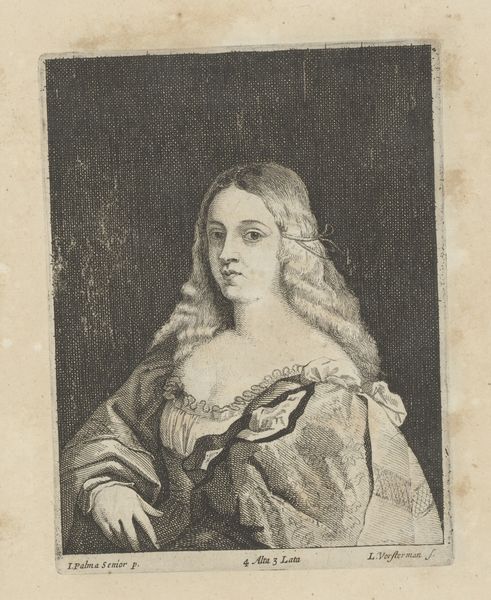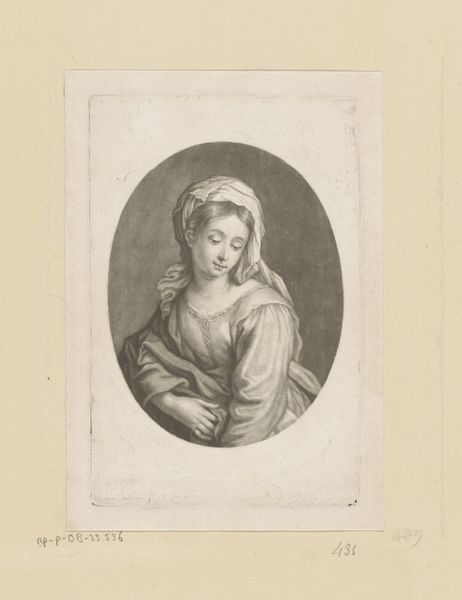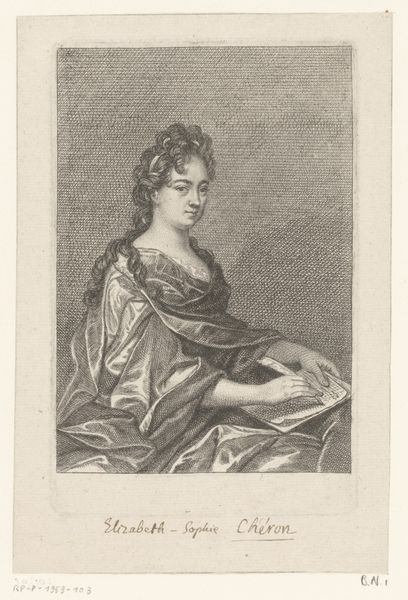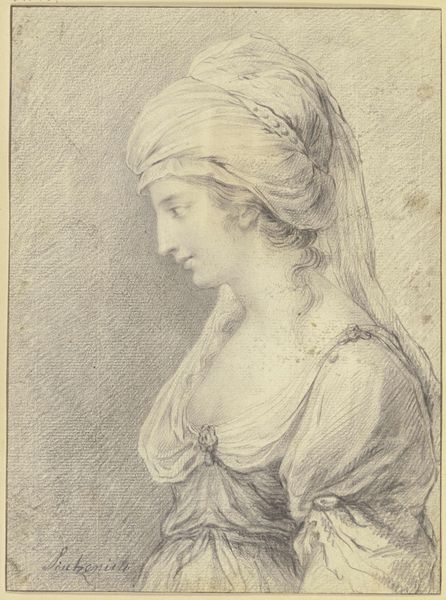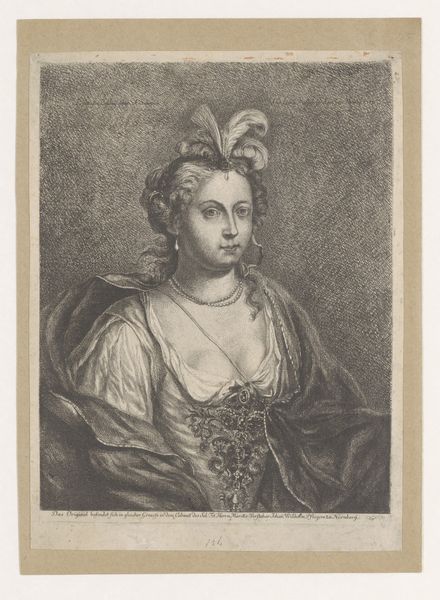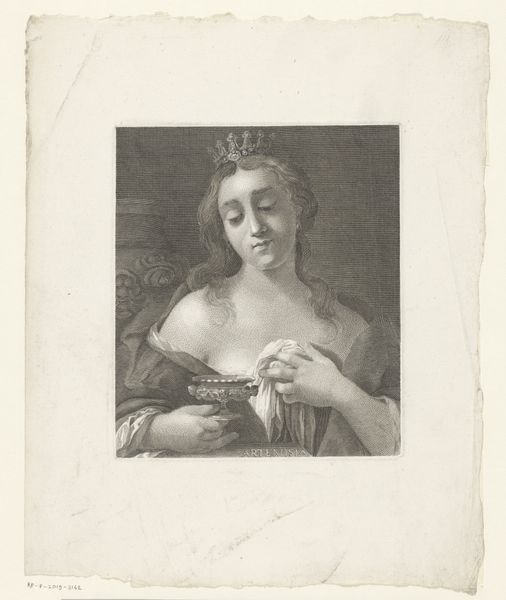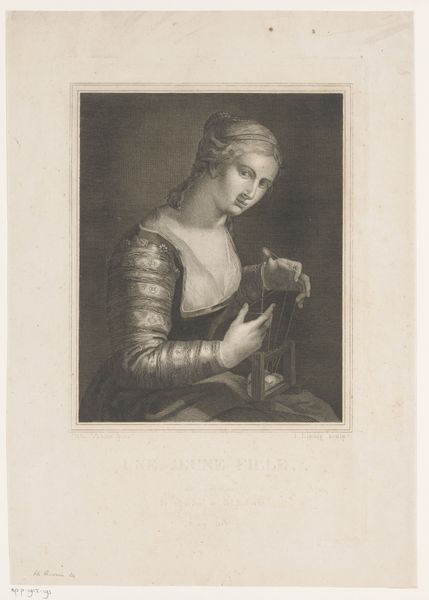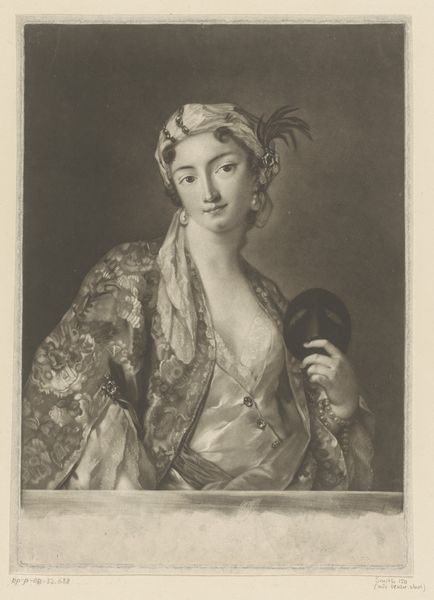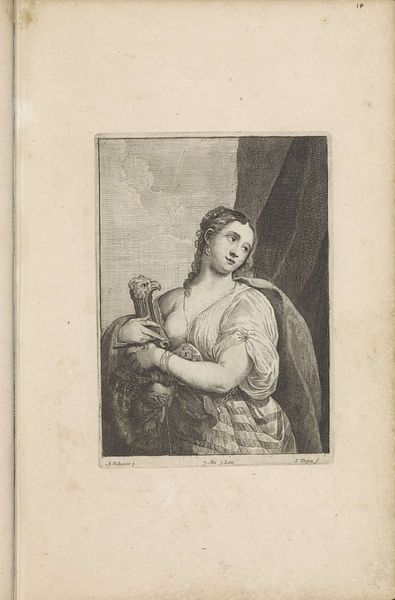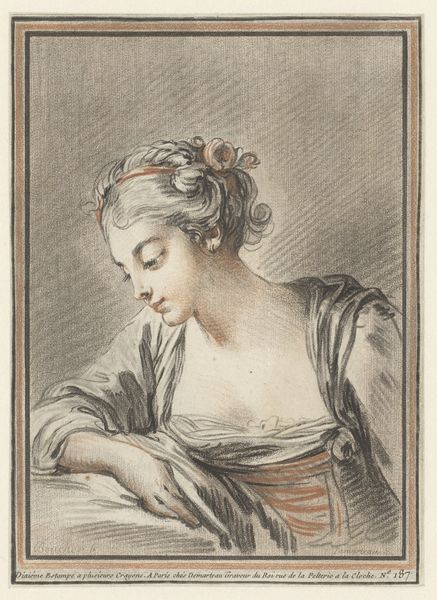
engraving
#
baroque
#
figuration
#
engraving
Dimensions: height 152 mm, width 116 mm
Copyright: Rijks Museum: Open Domain
Editor: Here we have Lucas Vorsterman II's "Portret van een jonge vrouw (Violante)," an engraving from 1660 housed in the Rijksmuseum. It's striking how delicate and somber the young woman appears, especially rendered in such precise detail through engraving. What are your thoughts on this portrait? Curator: It’s fascinating how Vorsterman captures this young woman, situating her within the Baroque era’s complex power dynamics. The female portrait in this era wasn’t simply about likeness. It negotiated identity, often within very patriarchal frameworks. The slight downturn of her gaze, her exposed chest— these were deliberate choices. What do they communicate about female agency, or the lack thereof, in representing women in 17th century Europe? Editor: I hadn't considered the politics of portraiture at the time. I was mainly drawn to the aesthetic qualities. Are you suggesting that her pose and dress are not just about beauty, but also about control? Curator: Precisely. The male gaze is implicit here. It is through whose eyes is she being presented? And more crucially, who benefits from this image? Considering her name "Violante" alludes to ideas around virtue. How does this interplay with our contemporary understanding of consent, autonomy, and representation? It really invites critical engagement. Editor: That’s a powerful perspective. I was focusing on the technical skill of the engraving, but seeing it as a statement about the woman’s position makes it so much more complex. Curator: It is in that complexity, where we can critically examine art history alongside social constructs, that it becomes incredibly engaging. Hopefully, this provides an opening for dialogue about this representation. Editor: Absolutely, thank you for illuminating the deeper cultural implications behind the beauty of Vorsterman's work!
Comments
No comments
Be the first to comment and join the conversation on the ultimate creative platform.
